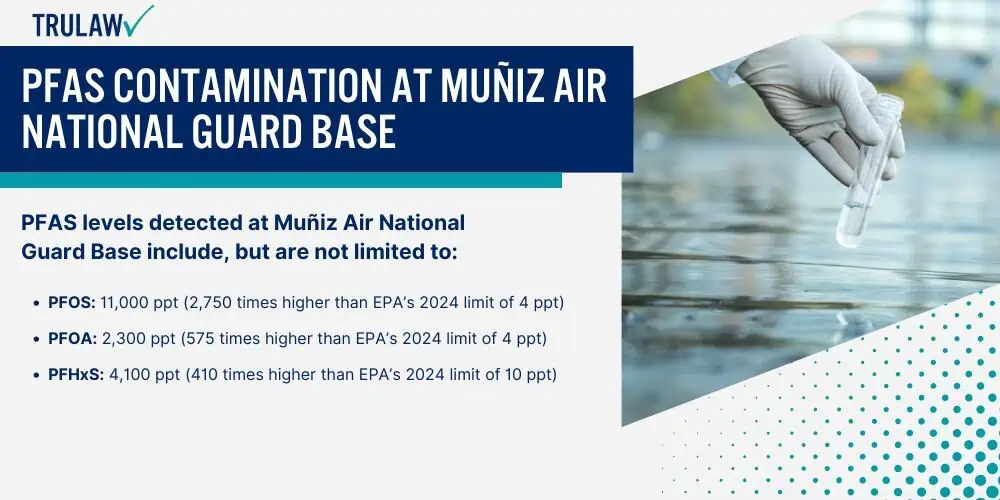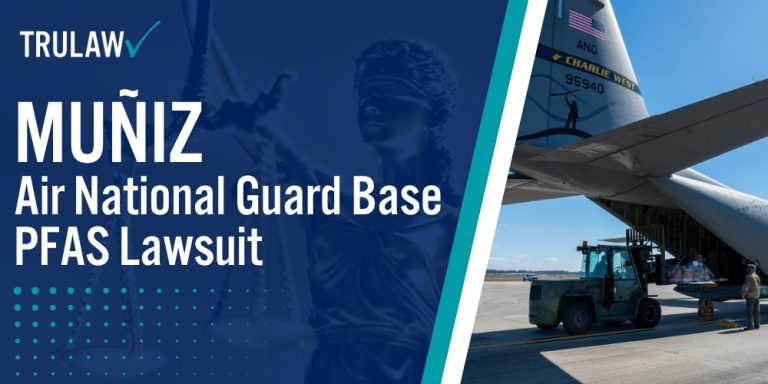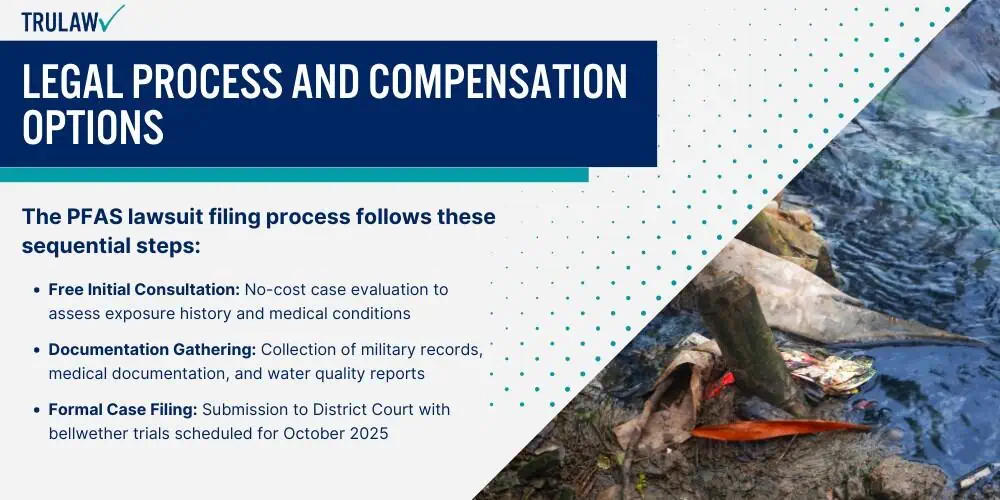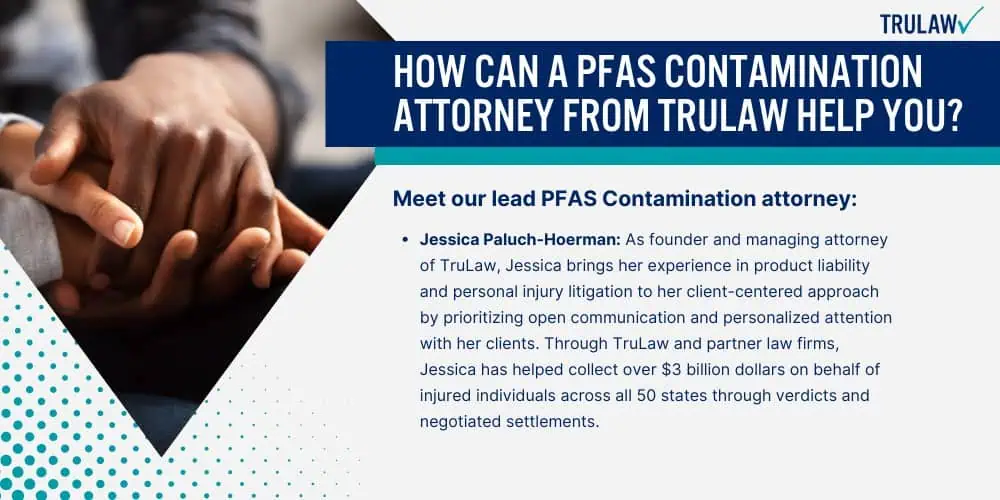Located at Luis Muñoz Marín International Airport in Carolina, Puerto Rico, Muñiz Air National Guard Base serves as the home of the 156th Airlift Wing, providing strategic airlift capabilities throughout the Caribbean region.

For decades, the base has relied on Aqueous Film Forming Foam (AFFF) containing toxic PFAS chemicals for firefighting training exercises and emergency response operations, leading to environmental contamination that now threatens service members and surrounding communities.
Recent testing has revealed combined PFAS levels reaching around 3,000 times higher than the Environmental Protection Agency’s 2024 maximum contaminant levels of 4 ppt.
Contamination Levels and Testing Results
Environmental testing conducted in 2019 revealed alarming concentrations of PFAS chemicals at Muñiz ANGB, with PFOS measured at 11,000 ppt and PFOA at 2,300 ppt (representing levels 2,750 and 575 times higher than the EPA’s legally enforceable standards).
These measurements place Muñiz among the most severely contaminated military installations in the United States and its territories, highlighting the urgent need for remediation and medical monitoring for exposed populations.
PFAS levels detected at Muñiz Air National Guard Base include, but are not limited to:
- PFOS: 11,000 ppt (2,750 times higher than EPA’s 2024 limit of 4 ppt)
- PFOA: 2,300 ppt (575 times higher than EPA’s 2024 limit of 4 ppt)
- PFHxS: 4,100 ppt (410 times higher than EPA’s 2024 limit of 10 ppt)
- PFHpA: 2,600 ppt (no federal MCL established)
- PFNA: 400 ppt (40 times higher than EPA’s 2024 limit of 10 ppt)
- PFBS: 230 ppt (no individual MCL; regulated under Hazard Index)
- Combined PFOS/PFOA: 13,300 ppt (3,325 times EPA maximum)
The persistence of these “forever chemicals” means that contamination will continue affecting human health and the environment for decades without aggressive intervention.
Each military service member, civilian employee, and family member who consumed contaminated water or worked with AFFF faces heightened risks of developing serious health conditions linked to PFAS exposure.
Sources of PFAS Contamination on Base
The primary source of PFAS contamination at Muñiz Air National Guard Base stems from decades of using AFFF for aircraft fire suppression systems and regular firefighting training exercises at designated burn pits throughout the installation.
Since the 1970s, military firefighters have conducted routine training drills using these fluorinated foams to combat potential aircraft fuel fires, releasing thousands of gallons of PFAS-laden runoff into the environment.
PFAS chemicals from foam applications have infiltrated soil and groundwater systems through multiple pathways, including direct application during training, equipment testing, hangar deluge system discharges, and emergency response incidents.
The unique chemical properties of PFAS compounds – designed to resist heat, water, and oil – make them extraordinarily persistent in the environment, earning them the designation of “forever chemicals” that accumulate rather than break down naturally.
Geographic Scope of Contamination
PFAS contamination at Muñiz ANGB extends beyond the immediate firefighting training areas to affect multiple zones across the installation, including aircraft hangars, maintenance facilities, and administrative buildings where personnel work and live.
Testing has identified contamination plumes in groundwater systems that flow beneath the base, potentially affecting drinking water wells and surface water bodies used by both military and civilian populations.
The base’s location within Luis Muñoz Marín International Airport creates additional contamination concerns, as PFAS-laden groundwater can migrate through Puerto Rico’s porous limestone geology, potentially reaching nearby residential communities in Carolina and surrounding municipalities.
The island’s tropical climate, characterized by heavy rainfall and frequent storms, accelerates the spread of contamination through surface runoff and infiltration.
The unique hydrogeological features may create preferential flow paths that extend the contamination’s reach far beyond the base boundaries.
If you or a loved one served at Muñiz Air National Guard Base and developed cancer or other serious health conditions after PFAS exposure, you may be eligible to pursue financial compensation.
Contact TruLaw using the chat on this page to receive an instant case evaluation and determine whether you qualify to join others in filing a Muñiz Air National Guard Base PFAS lawsuit today.








